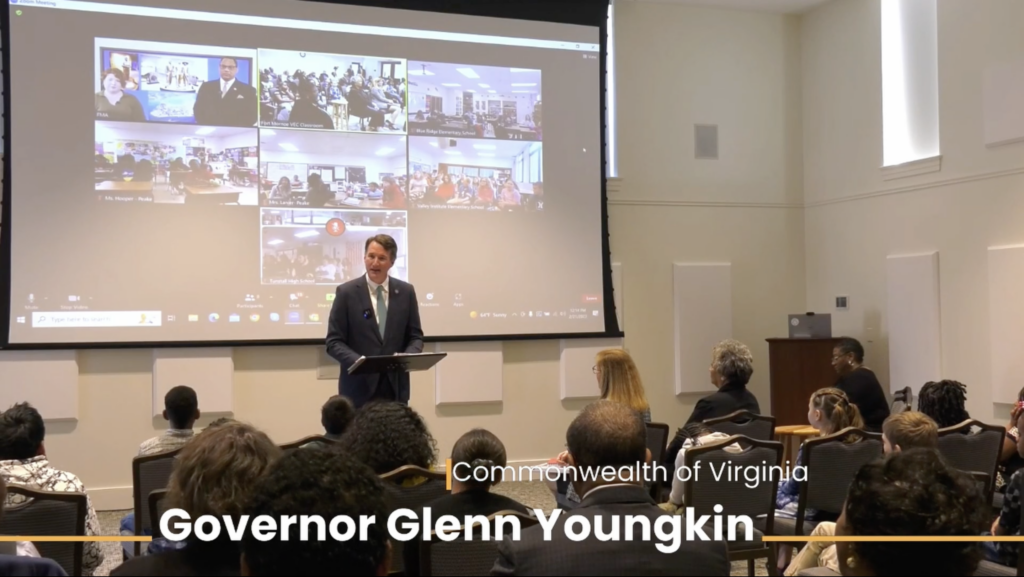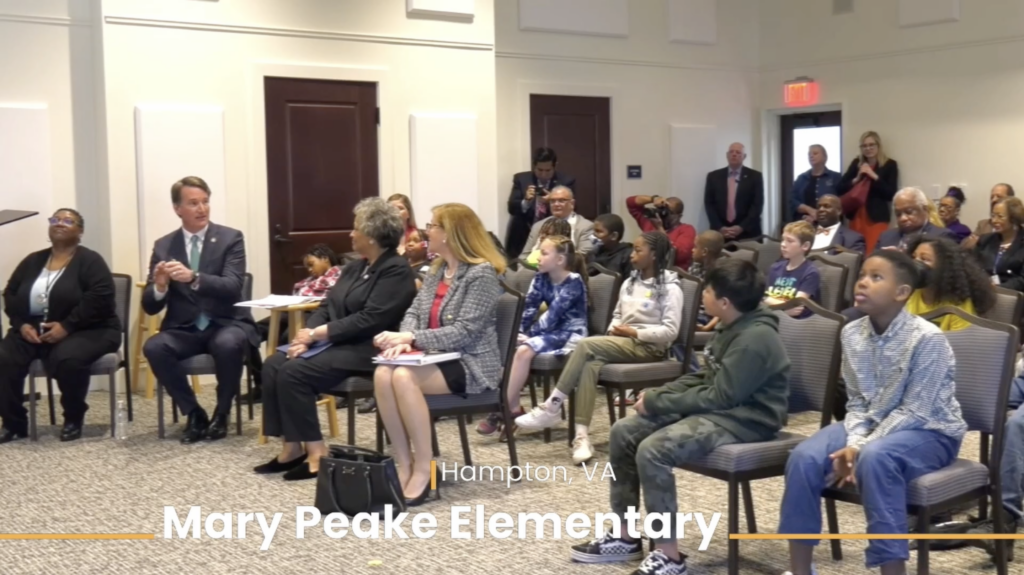Gov. Youngkin’s Latest Event Undermines Nikole Hannah-Jones’ Attack
Tyler O'Neil /
Virginia Gov. Glenn Youngkin, a Republican, on Tuesday joined fourth graders at Fort Monroe outside Newport News, Virginia, hosting an event teaching about the history of the fort, where black slaves fled during the Civil War to become freemen at what became known as “Freedom’s Fortress.”
The Youngkin event came two days after Nikole Hannah-Jones, author of The New York Times’ “The 1619 Project,” claimed that Youngkin “does not want children to learn that history.”
“The 1619 Project” author spoke on Feb. 19 at the McLean Community Center in a one-hour speech for which the Fairfax County Public Library system paid her $29,350 and the community center paid her an additional $6,000. She acknowledged that her project rewrites history and urged her audience to support reparations to blacks for slavery and to “subvert” America’s economic system, which she claimed is beset by institutional racism. She also suggested that the Confederates understood the Constitution accurately, establishing the United States as a “slave nation.”
Hannah-Jones spoke about the central role Virginia plays in the history of American slavery, stating that the “entire legal architecture of what is race, who’s black, who’s not, whose children will be born enslaved, whose children will be born free, it all is created in Virginia.”
“Massive resistance to Brown v. Board, the strategy is born here, and yet you have a governor who does not want children to learn that history even as they still sit in segregated classrooms,” “The 1619 Project” author claimed. She has previously criticized Youngkin’s efforts to remove critical race theory (a lens encouraging students to view America as institutionally racist) from school curriculums, saying he aims to provide a “sanitized” history for “white kids.”
Yet two days after Hannah-Jones attacked Youngkin, the governor was teaching Virginia’s children about slavery, according to footage of the Fort Monroe event obtained by The Daily Signal.
“We just covered in that lesson over 400 years of history, and it’s really important history, starting in 1619, where the first Africans were brought to this country as slaves, and it was a terrible, terrible, terrible beginning,” the governor said after Jess Meadows, education programs manager at the Fort Monroe Authority, led students through a lesson.

“But what we also learned was that, at Fort Monroe, a decision was made in order to give three men freedom that spread to thousands, and that was the beginning of the end of the horrific, terrible institution of slavery. And so right here, we get to see history come alive,” Youngkin added.
The governor noted that the students who joined him, virtually and in person, had “just finished studying the Constitution.” He said that document demonstrates “the fact that we are not perfect, and this country is not perfect, but—boy—are we in pursuit of a more perfect union together.”
Union Gen. Benjamin F. Butler freed three slaves at the fort in 1861, starting a surge of black refugees who came to the fort to receive their freedom. Butler declared the slaves “contraband of war” and refused to return them to their owners. Although Virginia joined the Confederacy in the Civil War, Fort Monroe remained part of the Union.

Youngkin’s office responded to Hannah-Jones’ claim by pointing to the governor’s efforts to teach all of America’s history, the good and the bad.
“We’re reaching a point in our country where the voices of division are getting louder and angrier,” Martin Brown, chief diversity, opportunity, and inclusion officer for the governor, told The Daily Signal in a statement Wednesday. “Fortunately, volume and emotion don’t create truth. While there will always be some in Virginia who seek to divide, Governor Youngkin will continue to lead by example and push for Virginia to teach all our history—the good and the bad.”
The New York Times stealth-edited claims from The 1619 Project, removing the assertion that the arrival of slaves in Virginia in 1619 represented the country’s “true founding.” Historians criticized the project for claiming that the Founders launched the Revolutionary War to protect slavery and for claiming that the 1619 arrival of slaves in Virginia represents the beginning of slavery in what would become the U.S. Black slaves first arrived in Florida in 1526, and slavery as an institution was nearly universal in early human societies, including among Indigenous North American tribes.
Have an opinion about this article? To sound off, please email [email protected], and we’ll consider publishing your edited remarks in our regular “We Hear You” feature. Remember to include the URL or headline of the article plus your name and town and/or state.
